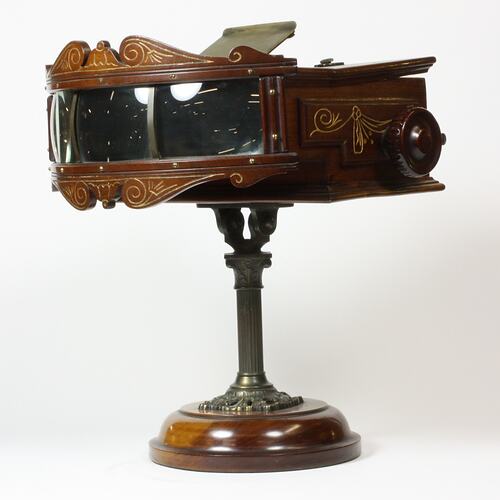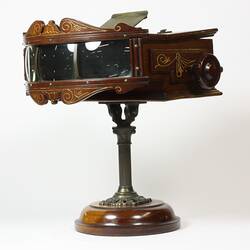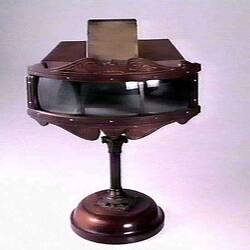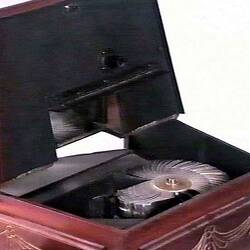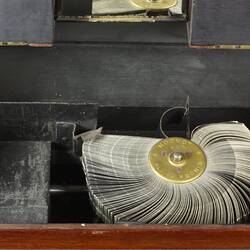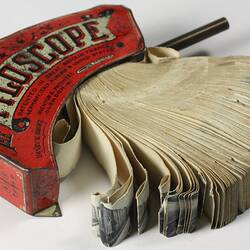Summary
Alternative Name(s): Flipper Viewer
Clockwork Kinora. It allows a sequences of photographic images, attached to a rotating reel, to be seen in rapid succession, providing the appearance of movement. Kinora reels ran for around 30 seconds.
The Kinora was invented by Lumière in France in 1896; the rights were later bought by the British Mutoscope & Biograph Company in 1898. Kinoras could be rented or bought for home use, and have been described as the first home movie entertainment system. Photographs of families could be taken in studios and made into Kinora reels; from 1908 a camera was sold that allowed people to make their own Kinora reels. The Kinora was short-lived, however: in 1914 its London factory burned down, and production of Kinora machines ceased.
Francis collection.
Physical Description
Wooden body on stand. Body comprises lens for light source at front, cavity inside in which image reel is housed, and a handle on the side for turning the reel. The body is mounted on a metal column, with pivot points on top; column is mounted on circular wood base. Reel is secured at centre with circular brass plate, with inscription.
More Information
-
Collection Names
-
Collecting Areas
-
Acquisition Information
Loan & Subsequent Donation from Australian Film Institute (AFI), Mr David Francis, by Nov 1990
-
Manufacturer
-
Inscriptions
Brass plate on reel: 'KINORA CO. LTD. / 154 / LONDON', Sticker: '337'.
-
Classification
-
Category
-
Discipline
-
Type of item
-
References
'The Magical Kinora', National Film and Sound Archive, [Link 1] accessed 18 Aug 2020. 'The Iris: Behind the Scenes at the Getty', [Link 2] accessed 18 Aug 2020.
-
Keywords
Optical Amusements, Optical Toys, Cinematography, Pre-Cinema Moving Images
